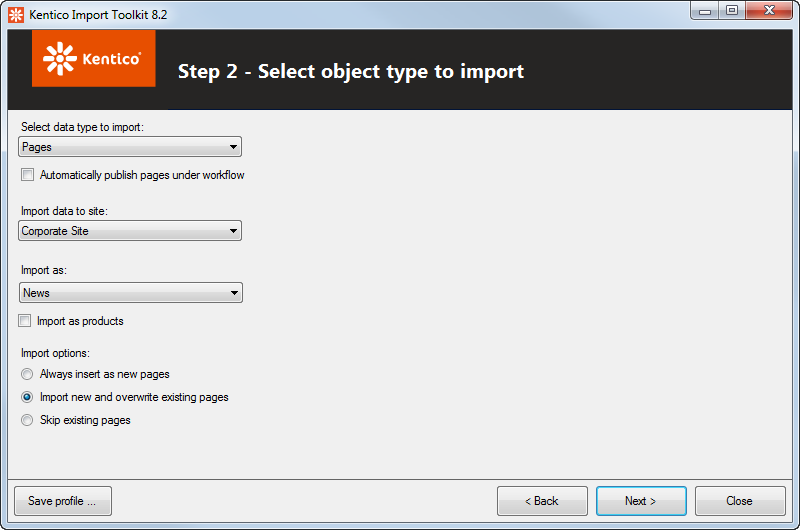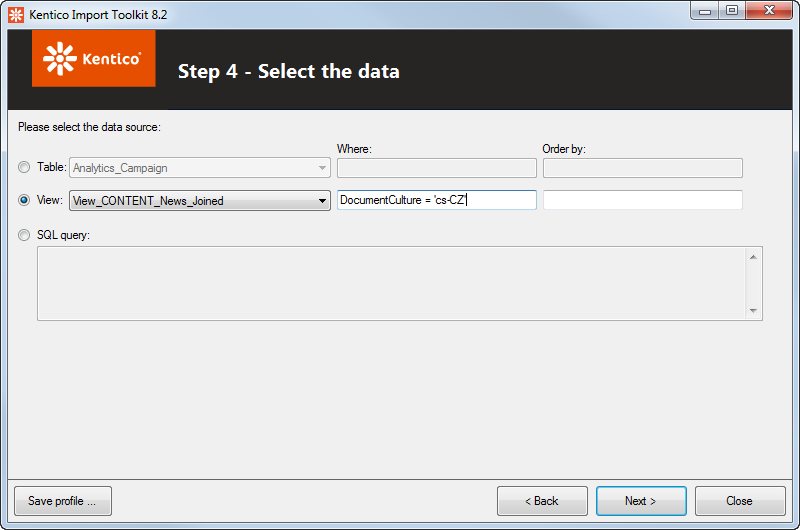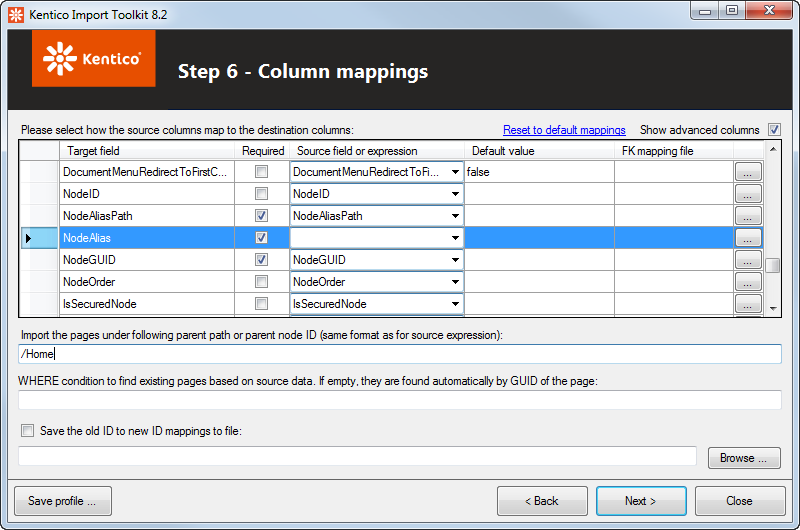Example - Importing a culture version of a page using the Kentico Import Toolkit
The following example demonstrates how to import a new culture version of a News page from one Kentico database to another.
- Run the utility from Windows Start -> All Programs -> Kentico <version> -> Utilities -> Kentico Import Toolkit.
- Choose Start new import session.
- Click Next.
Step 1
- Choose the folder of a project into which the data will be imported.
- Backup your data and select the check box.
- Click Next.
Step 2
Choose Pages from the Select data type to import drop-down list.
Select a site where you want to import the page in the Import data to site drop-down list.
Select the News page type from the Import as drop-down list.
Select Import new and overwrite existing pages from the Import options.

Click Next.
Step 3
- Provide the MS SQL database information and the authentication information.
- Click Next.
Step 4
Select the View option.
Choose the View_CONTENT_News_Joined view from the drop down list.
Type a where condition into the Where field to select only pages in the required culture (DocumentCulture = ‘<culture code>’).

Click Next.
Step 5
- Confirm whether you picked the correct data.
- Click Next.
Step 6
Enable the Show advanced columns option.
- If the advanced column fields are not filled in automatically, please click Back once and Next again.
Check whether the NodeAliasPath target field is mapped to the NodeAliasPath source field.
Erase the NodeAlias field. It must remain blank in order to import a new culture version of the same page.
Type the parent path of the pages into the text field below the data grid (you can use macros).

Click Next.
Step 7
- Select the Import the data option.
- Click Import data.
Step 8
After a successful import of multilingual pages, you should see the number of items, which were created. Close the dialog.